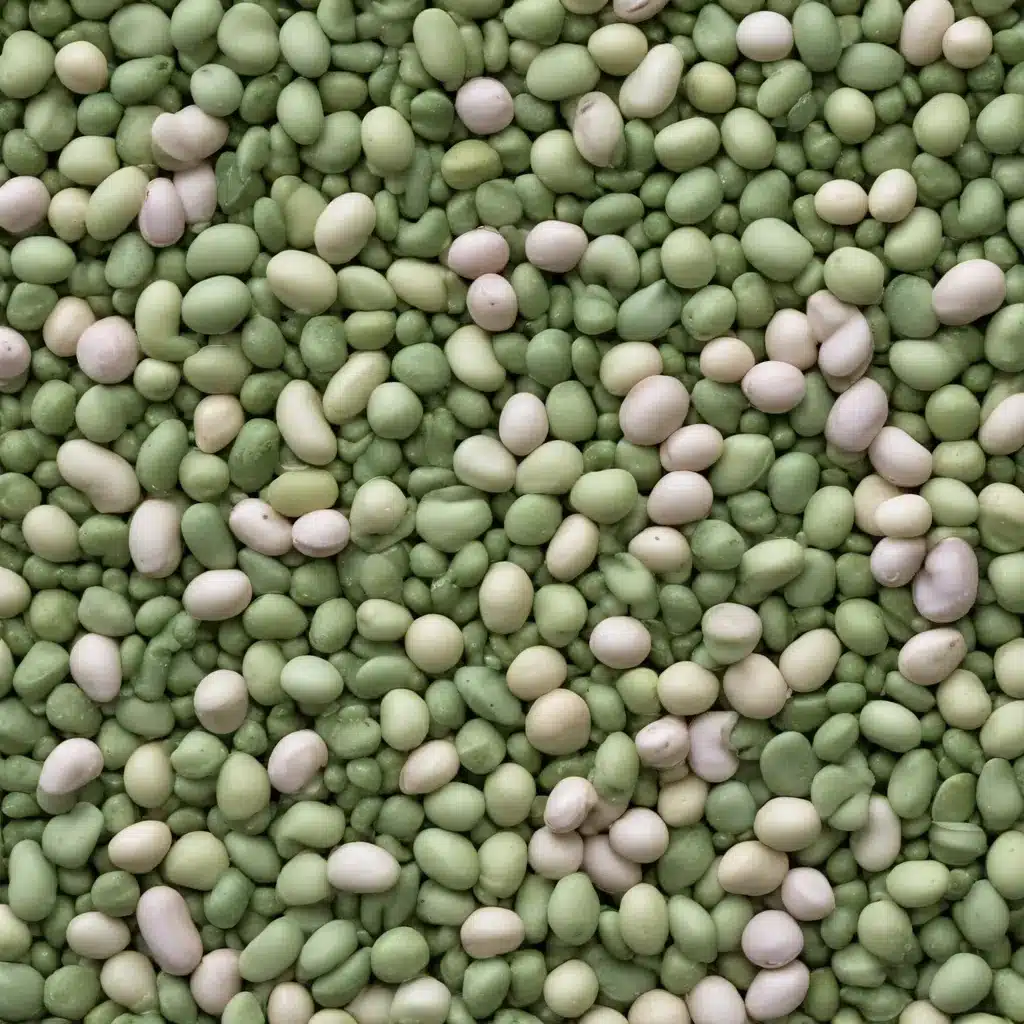
Unraveling the Secrets of the Soybean: A Groundbreaking Exploration
Soybean, a crop of immense importance, is a true powerhouse in the world of agriculture and nutrition. As a primary source of protein and oil, it has become an essential component in the diets of both humans and animals alike. But what truly lies at the heart of this remarkable plant? Through the revolutionary study known as “Tabula Glycine,” we now have an unprecedented glimpse into the intricate workings of the soybean at the single-cell level.
Introducing Tabula Glycine: A Comprehensive Transcriptome Atlas
Tabula Glycine is a groundbreaking project that has mapped the entire transcriptome of the soybean plant, Glycine max, at the single-cell resolution. This means that researchers have been able to analyze the expression patterns of each and every one of the 55,897 protein-coding genes within the soybean genome, across a wide range of organs and morphological structures.
The project involved the collection and analysis of single-nucleus RNA-sequencing data from nearly 120,000 nuclei, which were then grouped into 157 distinct clusters based on their unique transcriptomic profiles. This level of detail is truly astounding, as it allows us to understand the complex interplay of gene expression that gives rise to the diverse cell types and functions within the soybean plant.
Unraveling Cell Identity and Function
One of the most remarkable findings from the Tabula Glycine project is the role of transcription factor genes in defining cell identity and function. Transcription factors are a class of proteins that play a crucial role in regulating gene expression, essentially acting as the conductors of the cellular orchestra.
The researchers behind Tabula Glycine found that the patterns of activity for these transcription factor genes were sufficient to accurately define the vast majority of the 157 cell types identified. This suggests that these transcription factors are the key determinants of cell identity and function within the soybean plant.
By understanding the intricate web of transcriptional regulation, scientists can gain deeper insights into the fundamental processes that govern soybean growth, development, and response to environmental cues. This knowledge could pave the way for innovative strategies in crop improvement, enabling us to optimize soybean cultivation and enhance its nutritional value.
Decoding the Soybean’s Cellular Diversity
The Tabula Glycine dataset provides an unprecedented level of detail, allowing us to explore the remarkable cellular diversity within the soybean plant. From the delicate root hairs to the robust stems and leaves, each organ and morphological structure harbors a unique tapestry of cell types, each with its own specialized function.
For example, the soybean leaf is not just a simple green surface, but a complex structure comprising a variety of cell types, including palisade cells for photosynthesis, guard cells for regulating gas exchange, and even specialized trichomes that can protect the plant from herbivores.
Similarly, the soybean root system is not just a network of narrow tubes, but a dynamic ecosystem of cell types, including the root cap, the actively dividing cells of the meristem, and the specialized cells responsible for water and nutrient absorption.
By mapping the transcriptional profiles of these diverse cell types, Tabula Glycine provides a comprehensive reference for understanding the intricate processes that underlie soybean growth, development, and adaptation to its environment.
Unlocking Opportunities for Soybean Improvement
The insights gained from the Tabula Glycine project have the potential to revolutionize the way we approach soybean cultivation and improvement. By understanding the genetic and molecular mechanisms that govern soybean biology, researchers and breeders can develop more targeted and effective strategies for enhancing crop yields, improving nutritional quality, and increasing resistance to pests and diseases.
For example, the detailed information on transcription factor activity could guide the development of new soybean cultivars with enhanced drought tolerance or increased oil content. By selectively manipulating the expression of key transcription factor genes, breeders can potentially unlock new avenues for soybean improvement that were previously inaccessible.
Moreover, the Tabula Glycine dataset can serve as a valuable resource for the broader plant research community, enabling comparative studies across different plant species and the identification of conserved mechanisms of cellular function and development. This shared knowledge can foster collaborative efforts to advance our understanding of plant biology as a whole.
Exploring the Tabula Glycine Resource
The Tabula Glycine dataset is an open-access resource, freely available for exploration and research. The project’s website, http://review.tabulaglycine.org, provides a user-friendly interface where researchers, students, and the general public can delve into the wealth of information contained within this comprehensive transcriptome atlas.
Through interactive visualizations and intuitive data exploration tools, visitors can navigate the cellular landscape of the soybean plant, uncovering the unique gene expression profiles of individual cell types and tracing the intricate connections between them. This invaluable resource can spark new research collaborations, inspire innovative teaching methods, and foster a deeper appreciation for the remarkable complexity of the soybean plant.
Conclusion: A New Era of Soybean Exploration
The Tabula Glycine project represents a groundbreaking leap forward in our understanding of the soybean plant. By mapping the transcriptome at the single-cell level, researchers have unveiled a level of detail that was previously unimaginable, opening up new avenues for crop improvement, scientific discovery, and educational exploration.
As we delve deeper into the insights provided by this comprehensive transcriptome atlas, we can look forward to a future where the soybean, a staple of global agriculture, becomes an even more valuable and sustainable resource for human and animal nutrition. The Tabula Glycine project is a testament to the power of scientific inquiry and the transformative potential of technology in unlocking the secrets of the natural world.
So, let us embark on this journey of discovery, exploring the intricate cellular landscape of the soybean plant and unlocking the keys to its continued success and sustainability. The future of soybean research and cultivation begins here, with Tabula Glycine as our guide.

